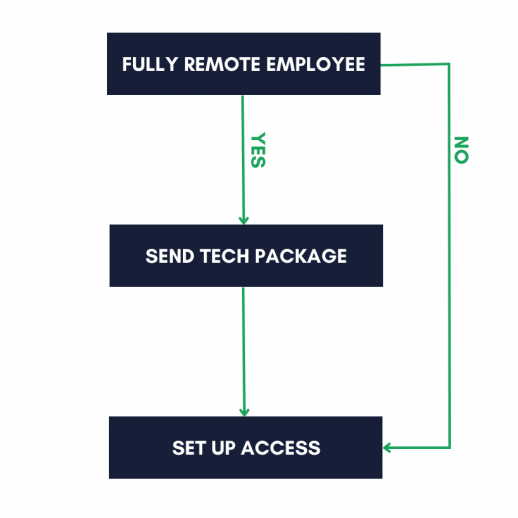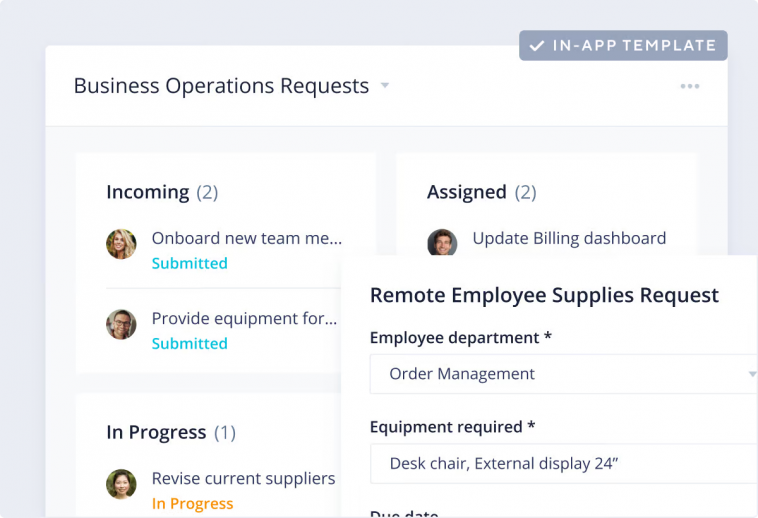Key takeaways:
- What is an SOP? A Standard Operating Procedure (SOP) is a documented workflow to ensure consistency in products and services, providing clear instructions for team tasks.
- What are the types of SOPs? Three main types include step-by-step SOPs for simple processes, hierarchical SOPs for detailed but unordered steps, and flowchart SOPs for variable processes.
- How do SOPs improve efficiency? SOPs remove guesswork, streamline tasks, and promote consistent results, making life easier for team members and ensuring quality.
- What are key steps to write an SOP? Focus on end goals, understand necessary processes, encourage expert participation, choose an appropriate format, and plan for updates.
- What should be avoided in an SOP? Exclude specific names, negative instructions, and footnotes to maintain clarity, keeping the focus on actionable tasks.
Success is great. But there’s something even better: knowing you’re set up to achieve even more of it moving forward.
That’s the major benefit of standard operating procedures (SOPs). While they might sound dry, rigid, and complex, these documented workflows are surprisingly simple — and they’re also the key to not only repeatable processes, but also repeatable results.
Daunted by the idea of figuring out how to write an SOP for your own team or organization? In this guide, we’ll dig into the simplest SOP meaning, the different types of SOPs you can use, and eight straightforward steps to pull together your own documented processes that don’t just generate success — they reliably reproduce it.
Want to get started on your SOP right away? Try Wrike’s business operations templates.
What is a standard operating procedure?
A standard operating procedure (SOP) is a documented process, workflow, or set of steps created to ensure consistency of products and services. These processes include clear-cut directions and step-by-step instructions, so that team members carry out the tasks with little variation and similar (if not completely matched) quality.
From business operations to marketing to sales to legal, all departments can benefit from having SOPs in place. Think about it: No matter what team you’re on, some processes and workflows can (and probably should) be repeated the same way for consistency and safe results. The same is true for projects of all sizes. SOPs in project management are crucial for consistent delivery and quality assurance.
Not only do SOPs lead to consistent results, but they also make team members’ lives easier by removing the guesswork of trying to figure out how to complete a particular process from start to finish.
And in certain instances, SOPs may be required for specific teams to meet compliance and regulatory standards. The Occupational Safety and Health Administration (OSHA), Information Technology Infrastructure Library (ITIL), and International Financial Reporting Standards (IFRS) are examples of regulatory agencies that may require certain processes be followed to the letter.
What are the three types of SOP?
That’s the gist of all SOPs — they’re documented processes for getting something done. However, documentation can mean something different to everyone. One person might prefer a prescriptive list of steps while another person benefits from a more visual approach.
Fortunately, there are different ways to spell out the steps and instructions. In fact, generally speaking, there are three different types of SOPs: a step-by-step SOP, a hierarchical SOP, and a flowchart SOP.
While they all serve the same purpose of clearly documenting a process or workflow, each approach has its unique differences, pros, and cons. Exactly what type of SOP you choose will depend on the circumstances you’re in and the process you’re documenting.
Let’s take a closer look at each of the three types of SOPs as well as some information to help you choose which one is the right fit for your team and your process.
1. Step-by-step SOP
Use it for: Straightforward and relatively short processes
The biggest clue is in the name of this SOP. A step-by-step SOP uses an ordered list of steps to document a process or workflow from start to finish. You start at the first step and move through to the last step – usually without skipping pieces or rearranging the order.
Let’s say you want to create an SOP for onboarding a new employee. A step-by-step SOP will list out the steps you need to take in the exact order you want to do them in. For example:
- Set up email, phone, and Slack access for new employee
- Create welcome gift with company swag
- Schedule meeting with HR specialist for benefits enrollment
- Schedule departmental presentations
- Schedule team-wide meet and greet
- Send “welcome” email to share this information with the new employee
One of the biggest benefits of a step-by-step SOP is that it’s intuitive. Most people understand how to write and use a chronological list of steps.
However, step-by-step SOPs can also be challenging to put together – particularly when it comes to figuring out the level of detail you should include. You want the SOP to be clear and helpful, but you also don’t want to end up with an 87-step process for a simple task. When listing steps chronologically like this, it can be tough to pinpoint what’s a crucial piece of information and what’s an unnecessary detail.
Even if you’re selective about the level of detail, step-by-step SOPs can get long — and most people admit it’s daunting to look at a seemingly endless list of steps they need to take. That’s why this format is the best and most efficient choice for processes that are somewhat straightforward and short.
2. Hierarchical SOP
Use it for: Processes that require detail but not necessarily a specific order
If you find yourself creating a running list of steps — and especially if you realize that many of the steps are interchangeable in terms of their order — then it’s likely that a hierarchical SOP is a better fit for your situation.
A hierarchical SOP is similar to a step-by-step in that you’re writing out detailed pieces. However, this approach also allows you to incorporate larger processes or categories to make the SOP much easier to read and follow. That makes it the best fit for processes that are more complex or technical in nature.
Let’s return to our employee onboarding example for some clarity. While the step-by-step SOP simply outlined all of the onboarding tasks in a running list, a hierarchical SOP could organize them into categories or separate processes. That gives people the option to adapt the SOP to their own unique needs. Here’s what this could look like:
1. Complete employee tech setup
Do for all employees:
- Create employee email address
- Set up employee phone
- Create employee Slack account
Do only for fully remote employees:
- Send tech package
Do only for in-office employees:
- Hook up computer and phone
That’s a simple example, but it illustrates how hierarchical SOPs can simplify complex processes into mini-processes of sorts that are easier to follow than a running list of steps.
While hierarchical processes are much more user-friendly in that way, they can also be a bit more complicated to create – particularly if you don’t have a high level of familiarity with the existing process.
3. Flowchart SOP
Use it for: Processes that have some inherent variability
Finally, there’s a flowchart SOP. Compared to the other two options, this one is the most visual. It’s essentially a diagram that you follow to move through a process from start to finish.
The benefit of a flowchart, though, is that it allows for quite a bit of flexibility compared to written SOPs. The user follows the arrow and basically “chooses their own adventure.” By selecting their own responses (whether it’s a “yes” or “no” or any other option), they move through the diagram in a way that’s completely tailored to their own, unique situation.
Here’s a simple SOP example of what a snippet of an employee onboarding process could look like if you’re using a flowchart style:

This makes flowchart SOPs the most adaptable of the bunch, as people can find only the information that’s applicable to them. But these can also be complex to put together – not only because they require a little bit of design, but also because you’ll need to think through all of the possible options in order to include the correct routes in the diagram.
SOP examples
As the above types of SOPs highlight, SOPs can be as simple or as complex as you need them to be – from a quick checklist to a detailed document.
The best way to understand an SOP is to look at a few more SOP examples, and we’ve pulled together a couple of samples for you here. Playing off of our existing example, the first is an SOP for onboarding new employees.
HR Onboarding Checklist
| New Hire Paperwork |
|
| Equipment Setup |
|
| Company Policy Distribution |
|
| Job Expectations |
|
| New Hire Check-in |
|
For your organization, you could also link to relevant documents within the checklist above to make it easy to locate all of the information in one place. An onboarding checklist helps ensure that no essential items get missed and that employers receive a consistent experience when joining a company.
You can also use SOPs for completing certain deliverables. Here’s an example SOP for a marketing team publishing blogs on the company website.
Blog Post Publishing Process
|
Blog Title: Byline: Publication Date: Approved By: |
|
With easy-to-follow instructions, anyone on your marketing team should be able to publish a blog post to the company website without much additional direction.
How to write a standard operating procedure
All of the above examples likely got your wheels turning about how to write an SOP for your own organization or team. And a good SOP should be relatively easy and intuitive just like those.
However, you might feel like you need a little more direction to ensure your documented processes offer clarity, rather than generate confusion. Let’s spell out some of the actual steps for creating an SOP. Essentially, let’s create an SOP for … well, creating an SOP.
Keep in mind that SOPs vary pretty greatly across industries, organizations, and team needs. But even so, these are the general steps that you’ll want to follow to create a finished procedure:
- Consider the end goal
- Understand which processes need documentation
- Encourage participation
- Choose a format
- Remember who you’re writing for
- Define metrics
- Plan for updates
- Implement the SOP
That’s the overview, but let’s take a more detailed look at each of those steps.
1. Consider the end goal
The best way to create a compelling and effective SOP is to start with the end in mind. Ask yourself this simple question:
What are you trying to achieve with a standardized procedure in place?
“Create a procedure” isn’t your answer here. Get to the end result you’re aiming for with that SOP. For example, are you trying to:
- Solve a problem?
- Boost efficiency?
- Reduce confusion?
- Ensure compliance?
- Avoid risks?
- Provide training?
- Increase consistency?
Focus on the big picture and understand your goals for this given SOP. You’ll fill in the rest of the details and instructions later, so don’t be afraid to keep your thoughts around the goal at a high level.
2. Understand which processes need documentation
We know what you’re thinking – too much process is burdensome, not to mention it can lack flexibility when things need to change.
There’s a fine line to balance between incorporating enough processes and having too many. That’s why it’s crucial to nail down and understand which components need documentation and the extent required to successfully communicate the steps to the audience. It won’t do you any good to implement documentation that your team members can’t get on board with.
It’s also essential to understand whether you’re documenting new processes altogether or updating SOPs that are already in place. Try to avoid wasting time recreating the wheel if there’s a level of documentation that already exists concerning your goals for your SOP.
3. Encourage participation
Here’s the good news: just because you were tasked to draft the SOP and map out processes doesn’t mean you have to be the expert at every stage in the process and know all of the ins and outs. Unless you’re heavily involved in the process, there’s a good chance you won’t have a level of detailed knowledge to support every SOP you work on, and that’s OK.
Instead, encourage participation and consult the experts – those people who have their “boots on the ground” with that process every day. Subject matter experts (SMEs) and those who perform the work but aren’t experts yet are your best source of understanding the tasks at hand and how to achieve them. The more perspectives you can incorporate, the stronger your process will be, as it will cover many angles and ways of thinking.
4. Choose a format
When it comes to your SOP format, there are various structures to choose from to help you deliver the most effective documents possible. Your SOP format might be influenced by SOPs that already exist, regulatory compliance needs, industry standards, and the type of process you’re documenting.
Ultimately, the length and format of your SOP are up to you and should be based on your needs. Here are a few format ideas to help you get started:
- Checklists: A checklist is a great tool for simple processes that don’t require much detail to convey each step. A simple list is also an excellent option for new procedures you want to test out before mapping a process in greater detail. You can add as many or as few hierarchies within your checklist as needed.
- Steps: Similar to checklists but slightly more granular, a bulleted or numbered steps format is ideal for procedures in sequential order. As long as your tasks are simple and easy to convey in a list format, the steps format is a solid option for your SOP.
- Process flowchart: Flowcharts tend to be best suited for processes with many steps and variable outcomes involved. You can visually see the entire process from start to finish and how functions relate to one another. Use flowcharts when the results of the process aren’t always the same.
5. Remember who you’re writing for
Know your audience and how to communicate with them. There’s nothing worse than spending time putting together impressive and helpful documentation, only to find that the audience doesn’t use it or understand it.
If you want to set yourself up for success and adoption of your SOP, consider the following:
- Who are you writing this SOP for?
- Does your audience have prior knowledge of this procedure?
- What type of format will resonate best with this audience?
- What level of detail is needed?
- Would images and graphics be helpful?
6. Define metrics
Developing an SOP is just the beginning of the process. What happens after your procedure is mapped out? Team members should learn and adopt the process based on your documentation. Develop metrics to measure whether your SOPs are getting the job done or not.
The easiest way to measure the success of your SOPs is to build measurements into the procedures themselves. For example, let’s say you’re writing an SOP for how to lock up the office at the end of the day. Step four is to lock the three office doors (main door, back door, and side office entrance). We could measure this step by walking to all three doors to ensure they were locked.
7. Plan for updates
Don’t fall into the trap of thinking that once a process is in place, you never have to think about it again. While that might be true for some basic processes that won’t ever change, it’s crucial to establish and schedule a review process for your SOPs.
If your organization strives to meet formal standards, such as ISO 9001, the pressure to commit to an annual review and update process is even greater. But even if your company doesn’t follow any formal standards or certification programs, you likely will need to update your processes over time. Establish a cadence that works best for your teams and determine who is responsible for seeing the annual review process through.
8. Implement the SOP
Phew! Most of the hard work is behind you and it’s time to put your new SOP into action.
Before crossing the finish line, determine a system for managing and organizing your SOP documents. Labeling versions of documents with a consistent naming system and publication date can help your teams understand how to find the most current information. It might also be helpful to create a plan for storing archived SOPs for reference.
One final note: don’t send your SOP out into the void and hope it sticks. If you’re implementing an entirely new process or making some significant changes to the previous way of doing work, consider building out additional training elements and follow-ups to ensure your SOP implementation succeeds.
What should not be included in an SOP?
You know that your SOP needs to explicitly spell out the steps someone needs to take to complete a process. But what about things your SOP shouldn’t include? Here are a few pieces of information you should omit from your SOP for clarity’s sake:
- Names: People play important roles in processes, and it can be tough to spell out the steps without mentioning specific people. But what happens if someone moves on from your company? Or the contact person changes for another reason? You’ll end up with a mess of SOPs that constantly need to be updated. Rather than naming people specifically, opt for a general title or function (for example, say “Account Manager will…” rather than “Kara will…”). It’ll make your SOPs more evergreen and save you a ton of administrative work.
- Negatives: Your SOP is intended to tell people what to do, but you might be surprised by how easy it is to default to telling them what not to do. That can be confusing (not to mention intimidating), so avoid negatives and instead stay focused on providing explicit dos rather than don’ts. After all, it’s far more helpful (not to mention clearer) to say, “Set up the new employee’s email address” than “Don’t forget to set up the new employee’s email address.”
- Footnotes: Think of your SOP like an instruction manual. People are going to use it as a guide, and they’re likely going to jump right in and follow your instructions in order — without reading the procedure in its entirety first. They’ll do step one. When they’re done, they’ll move on to step two. If you leave important information or disclaimers for a section at the very end, people have probably already taken the steps without your caveats in mind. And now they need to go back and fix their errors. Your SOP should list the information people need to know exactly when they need them. You can’t save those crucial details for the end.
Use Wrike’s business operations template to create an SOP today

In the long run, SOPs can save you and your team a lot of time and wasted work. But these documented processes also require quite a bit of work to create.
Project management software or professional services software such as Wrike is packed with features that can help you successfully create SOPs for yourself, your team, or your entire organization:
- Share files and tasks instantly (when you update an SOP, you can send the updated one out ASAP)
- Assign tasks to team members to clarify who’s responsible for each part of the SOP
- Make cross-functional collaboration and centralized communication easier for all team members
Plus, you don’t need to start your SOPs from scratch. Wrike has pre-made project management templates that you can use as a helpful starting point for your own SOPs. For example, check out the business operations templates for streamlined project planning or the employee onboarding and offboarding template to efficiently handle new and existing employees. The framework is all there for you — you just need to customize accordingly.
Creating your SOPs will take a little bit of elbow grease, particularly if your team and organization have a lot of repeated processes you want to get down on paper.
But at the end of the day, the SOPs you pull together will be a lot like that manual for your refrigerator or lawn mower that you hung onto just in case: you might not think about them daily, but you’ll sure be glad to have them when you need them.
Ready to get started on your first SOP? Use Wrike’s business operations templates to create your SOP today.




